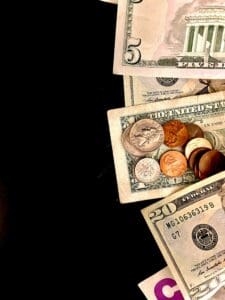By Dylan Matthews
See original post here.
Large sections of my brain that could contain useful knowledge are instead filled up with dumb tweets I saw years ago. One of my absolute favorites was someone identifying himself only as “Side Hustle King,” who would ask his followers, “Would you rather get paid $1,000,000 right now or $50 every month for the rest of your life? I’ll take Option B. That’s what passive income is.”
To save you some arithmetic: Unless you plan to live at least another 1,667 years (which is what it would take to make $1 million in $50 monthly increments) and do not care about inflation, Side Hustle King is mistaken. Option A is far better. It’s a case in point that, sometimes, you should take the lump sum, not regular payments.
GiveDirectly, a charitable nonprofit that sends cash directly to low-income households, has identified another such case, one where the answer was a little less obvious. For years now, GiveDirectly has been conducting the world’s largest test of basic income: It is giving around 6,000 people in rural Kenya a little more than $20 a month, every month, starting in 2016 and going until 2028. Tens of thousands more people are getting shorter-term or differently structured payments.
One of the big questions GiveDirectly is trying to answer is how to direct cash to low-income households. “Just give cash” is a fun thing to say, but it elides some important operational details. It matters whether someone gets $20 a month for two years or $480 all at once. Those add up to the same amount of money; this isn’t a Side Hustle King situation. But how you get the money still matters. A certain $20 every month can help you budget and take care of regular expenses, while $480 all at once can give you enough capital to start a business or another big project.
The case for giving all the money upfront
The latest research on the GiveDirectly pilot, done by MIT economists Tavneet Suri and Nobel Prize winner Abhijit Banerjee, compares three groups: short-term basic income recipients (who got the $20 payments for two years), long-term basic income recipients (who get the money for the full 12 years), and lump sum recipients, who got $500 all at once, or roughly the same amount as the short-term basic income group. Suri and Banerjee shared some results on a call with reporters this week.
By almost every financial metric, the lump sum group did better than the monthly payment group. Suri and Banerjee found that the lump sum group earned more, started more businesses, and spent more on education than the monthly group. “You end up seeing a doubling of net revenues” — or profits from small businesses — in the lump sum group, Suri said. The effects were about half that for the short-term $20-a-month group.
The explanation they arrived at was that the big $500 all at once provided valuable startup capital for new businesses and farms, which the $20 a month group would need to very conscientiously save over time to replicate. “The lump sum group doesn’t have to save,” Suri explains. “They just have the money upfront and can invest it.”
Intriguingly, the results for the long-term monthly group, which will receive about $20 a month for 12 years rather than two, had results that looked more like the lump sum group. The reason, Suri and Banerjee find, is that they used rotating savings and credit associations (ROSCAs). These are institutions that sprout up in small communities, especially in the developing world, where members pay small amounts regularly into a common fund in exchange for the right to withdraw a larger amount every so often.
“It converts the small streams into lump sums,” Suri summarizes. “We see that the long-term arm is actually using ROSCAs. A lot of their UBI is going into ROSCAs to generate these lump sums they can use to invest.”
I visited one of the villages receiving the 12-year UBI back in October 2016, and even then I observed people putting together ROSCAs and making plans to accumulate cash to invest. Edwine Odongo Anyango, a father of two and handyman who was 29 at the time, told me he had formed a ROSCA with 10 friends. “The monthly thing is not bad, but I think a lump sum payment would be better,” he told me. “That way you can do a big project at once.”
But I was surprised by just how often this attitude was reflected in Suri and Banerjee’s data. They found that the smallest increase in consumption — in actual regular spending on things like food and clothing — was in the long-term UBI group, which you might think is the group most able to spend a bit more every month. For the most part, they don’t do that: They invest the money instead.
The advantages of monthly
As you might expect, given how entrepreneurially minded the recipients are, the researchers found no evidence that any of the payments discouraged work or increased purchases of alcohol — two common criticisms of direct cash giving. In fact, so many people who used to work for wages instead started businesses that there was less competition for wage work, and overall wages in villages rose as a result.
And they found one major advantage for monthly payments over lump sum ones, despite the big benefits of lump sum payments for business formation. People who got monthly checks were generally happier and reported better mental health than lump sum recipients. “The lump sum group gets a huge amount of money and has to invest it, and this might cause them some stress,” Suri speculates. In any case, the long-term monthly recipients are happiest of all, and “some of that is because they know it’s going to be there for 12 years … It provides mental health benefits in a stability sense.”
I think this points to the takeaway from this research not being “just give people a lump sum no matter what.” Ideally, you could ask specific people how they would prefer to get money. For instance, if you were a Kenya politician designing a basic income policy on a permanent basis, you could design it such that a recipient could opt into a $500 payment every two years or a $20 payment every month.
But barring that, long-term monthly payments seem to offer the best of all worlds because they enable people to use ROSCAs to generate lump sum payments when they want them. That enables flexibility: People who want monthly payments can get them, and people who need cash upfront can organize with their peers to get that.






















